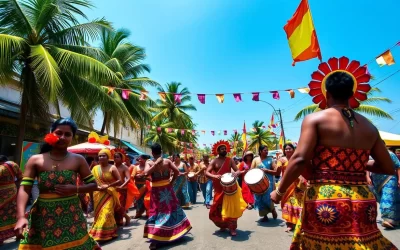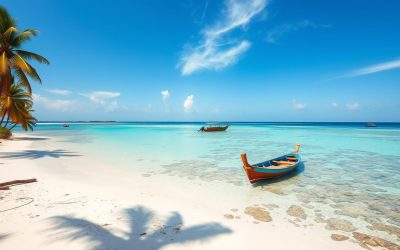You’ll discover a fascinating linguistic landscape in Lakshadweep, India’s smallest union territory, which reflects its unique geography and cultural history.
This archipelago of 36 islands in the Arabian Sea is home to distinct language communities, with only 10 islands being inhabited.
The languages spoken in Lakshadweep are closely tied to its historical connections with mainland India and neighboring Maldives.
As you explore this unique island territory, you’ll find that English serves as the official language for administrative purposes, while several indigenous languages are widely spoken among the local population.
The Linguistic Landscape of Lakshadweep
As you explore the Lakshadweep islands, you’ll discover a unique linguistic landscape shaped by its geographical position. The Lakshadweep archipelago, comprising 36 islands, is located in the Arabian Sea, approximately 220-440 km off the Malabar Coast of mainland India.
Geographical Context of Lakshadweep
The islands of Lakshadweep are small, with none exceeding 1 mile in breadth, and occupy a total land area of approximately 32.62 km². With a population of 64,473 across the ten inhabited islands, the territory has maintained strong linguistic traditions. The geographical isolation of these islands has contributed to the preservation of unique dialects and language varieties.
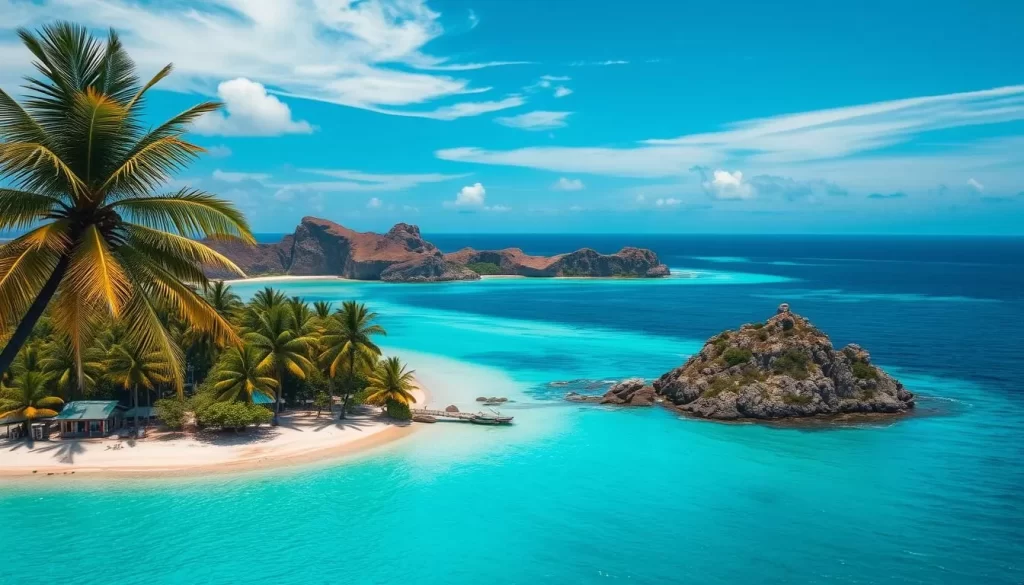
The territory’s small land area and isolated location have resulted in distinct linguistic characteristics among its population. You can observe how the island groups, including Amindivi, Laccadive, and Minicoy, each have their own linguistic features.
Cultural Diversity of the Islands
Cultural diversity in Lakshadweep reflects its historical connections with Kerala, the Maldives, and various trading communities that have visited the archipelago over centuries. The island groups have developed distinct cultural and linguistic identities, contributing to the overall linguistic mosaic of the territory.
You will find that the cultural heritage of Lakshadweep is rich and diverse, with influences from various regions. The linguistic diversity is a testament to the territory’s history and its strategic location in the Arabian Sea.
Historical Evolution of Languages in Lakshadweep
As you explore the linguistic history of Lakshadweep, you’ll discover a rich tapestry woven from various cultural influences. The islands’ strategic location in the Arabian Sea has made them a crossroads of cultural exchange, shaping the linguistic landscape over the centuries.
Pre-Islamic Linguistic Influences
The pre-Islamic period saw significant linguistic influences from early Hindu settlers, whose legacy is still evident in the social stratification and matrilineal kinship systems found in the islands. Archaeological evidence from Kalpeni indicates human settlement in the region from at least 1500 BCE. The islands are mentioned in the Buddhist Jataka tales, dated to the 3rd century CE, further highlighting the region’s cultural significance.
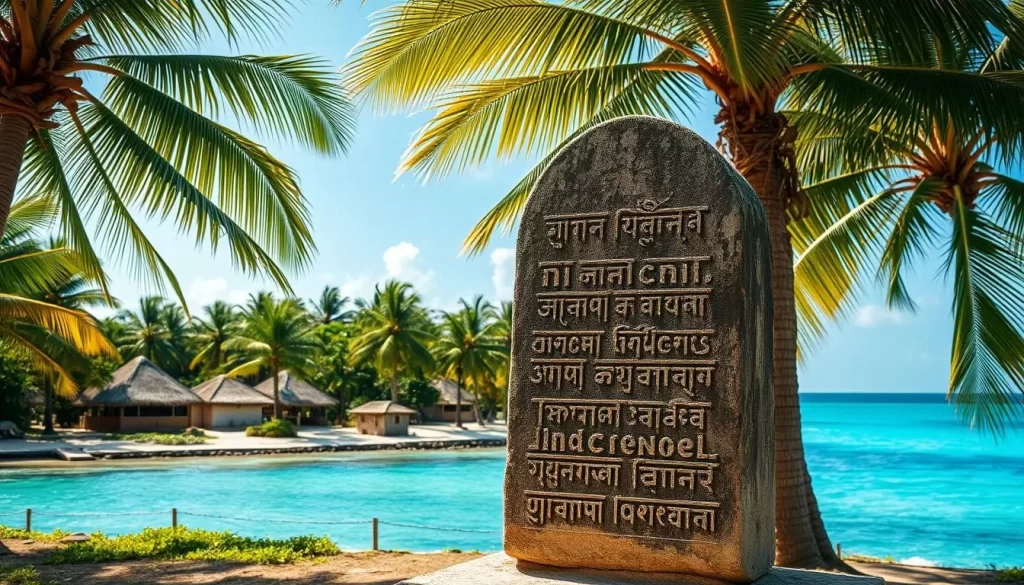
Impact of Islamic Migration on Language
A significant turning point in the linguistic history of Lakshadweep came in the 7th century when Islam was introduced to the islands, reportedly by Ubaidullah in 661 CE. This event brought Arabic influences to the local languages, shaping the linguistic landscape. Most settlers of the islands are descendants of migrants from the Malabar coast of Southwest India, and are ethnically similar to the Mappilas of Kerala.
The migration of people from the Malabar coast significantly shaped the linguistic landscape, with many inhabitants adopting languages and dialects from their ancestors.
Colonial and Post-Independence Language Policies
During the colonial period, Portuguese influence in the 15th century and later British rule introduced European linguistic elements and administrative language policies. After India’s independence in 1947, new language policies were implemented when Lakshadweep became a union territory in 1956, establishing English as the official administrative language while preserving local linguistic traditions.
This blend of colonial and local influences has resulted in a unique linguistic heritage, with many languages and dialects coexisting in the islands.
English: The Official Language of Lakshadweep
In Lakshadweep, English holds the status of an official language, facilitating official communications and documentation. As the union territory of Lakshadweep, it is imperative to understand the role English plays in its administration.
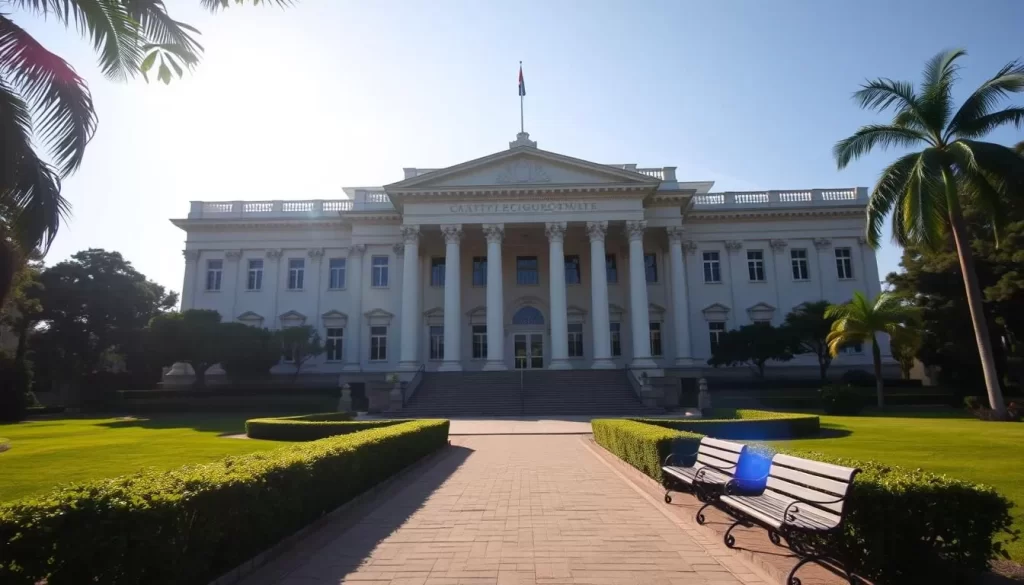
Administrative and Legal Status
English is extensively used in the administration of Lakshadweep. The territory is divided into ten administrative sub-divisions, with sub-divisional officers heading these divisions, except for Minicoy and Agatti islands, which are headed by deputy collectors. You should know that English is the primary medium for government administration and legal proceedings.
- The territory’s administrative structure relies heavily on English for official communications.
- In the legal domain, Lakshadweep falls under the jurisdiction of the Kerala High Court, where English is used for court proceedings and legal documentation.
Usage in Education and Government
English is a crucial part of the education system in Lakshadweep, particularly in higher education and professional training programs. Government employees are required to have proficiency in English for official communications and report writing.
- The education system incorporates English as a primary language of instruction.
- Government employees need to be proficient in English to interact with mainland Indian administrative bodies.
Lakshadweep (UT), India: Official and Widely Spoken Languages
As you explore the linguistic landscape of Lakshadweep, you’ll discover a diverse array of languages spoken across the islands. The Lakshadweep islands, with a population of 64,473 as per the 2011 census, comprising 33,123 males and 31,350 females, exhibit a rich linguistic heritage.
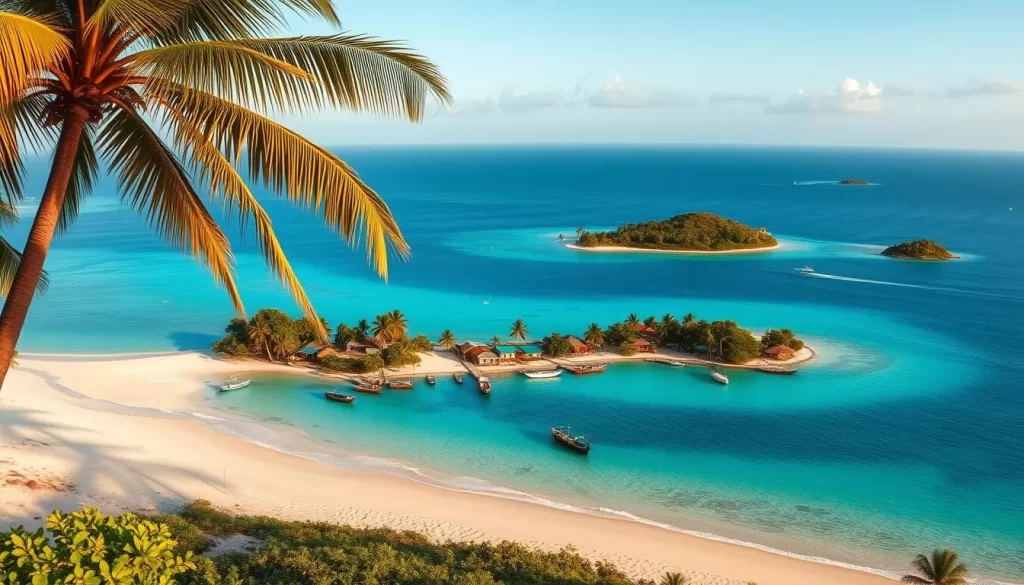
Language Demographics and Distribution
The language demographics of Lakshadweep reveal a predominantly Malayalam-speaking population, with approximately 84.17% speaking Malayalam, specifically the Jeseri dialect. Dhivehi, locally known as Mahl, is the second most widely spoken language at 14.44%, primarily concentrated on Minicoy Island.
| Language | Percentage of Population |
|---|---|
| Malayalam (Jeseri) | 84.17% |
| Dhivehi (Mahl) | 14.44% |
| Others | 1.39% |
The name “Lakshadweep” itself is a reflection of the territory’s linguistic heritage, meaning “one hundred thousand islands” in both Malayalam and Sanskrit.
Language Preferences Across Age Groups
Language preferences in Lakshadweep show interesting patterns across different age groups. Younger generations are increasingly bilingual or trilingual, comfortably switching between local languages and English. This linguistic adaptability is a testament to the islands’ cultural and linguistic diversity.
The population maintains strong linguistic traditions despite modernization and increased contact with mainland India. While official statistics recognize major language groups, many residents speak unique local variations that blend elements of multiple languages, creating a rich linguistic tapestry across the islands.
Malayalam and Jeseri: The Predominant Languages
As you explore the linguistic landscape of Lakshadweep, you’ll find that Malayalam and Jeseri are the predominant languages spoken across the islands. The unique cultural and geographical context of Lakshadweep has shaped the way these languages are used and perceived by the inhabitants.
Jeseri: The Dialect of the Amindivi and Laccadive Islands
Jeseri, also known as Dweep Basha, is a dialect of Malayalam that is widely spoken in the Amindivi and Laccadive islands of Lakshadweep. This unique dialect has evolved from Malayalam, incorporating distinctive features due to the islands’ isolation and the influence of other languages such as Arabic through maritime trade. You’ll discover that Jeseri serves as the primary means of daily communication, cultural expression, and local administration on most Lakshadweep islands.
The Jeseri language is characterized by its own set of vocabulary and grammatical structures, which are shaped by the language contact and cultural exchange that has occurred over the centuries. Although Jeseri is closely related to Malayalam, it has developed distinct features that set it apart from the standard language.
Relationship Between Standard Malayalam and Jeseri
Standard Malayalam and Jeseri share the same script and basic vocabulary, but Jeseri contains numerous loan words from Arabic, Portuguese, and English, reflecting the islands’ rich trading history. The relationship between standard Malayalam and Jeseri can be compared to that between a mainland language and an island dialect, with differences in pronunciation, unique vocabulary, and grammatical variations.
While Jeseri is used for informal purposes and local communication, standard Malayalam is employed for formal education and communication with Kerala. This dual usage highlights the complex linguistic dynamics at play in Lakshadweep, where both the local dialect and the standard language coexist and serve different purposes.
Mahl: The Language of Minicoy Island
Minicoy Island, the southernmost island in the Lakshadweep archipelago, is home to the Mahl language, a dialect of Dhivehi. This unique linguistic feature sets Minicoy apart from the other islands in the group.
Connection to Dhivehi and Maldivian Culture
The Mahl language reflects Minicoy’s geographical and cultural proximity to the Maldives rather than the Malabar coast. The people of Minicoy, known as Mahls, share ethnic and cultural ties with the Maldivian communities. This connection is evident in the language’s similarity to Dhivehi, the national language of the Maldives. The Mahl speakers on Minicoy Island belong to the Mahl ethnic group, who maintain family connections and cultural traditions with Maldivian communities.
You’ll notice that the cultural practices and traditions on Minicoy Island are more aligned with those of the Maldives. This is due to the historical and geographical ties between Minicoy and the Maldives. The language has been influenced by these interactions, resulting in a distinct dialect that is closely related to Dhivehi.
Unique Features of the Mahl Dialect
The Mahl dialect has several distinctive features that differentiate it from other languages spoken in Lakshadweep. One of the notable characteristics is its phonological features, including unique consonant sounds and tonal patterns. These features distinguish Mahl from both standard Dhivehi and the Malayalam dialects spoken on other Lakshadweep islands.
| Feature | Description |
|---|---|
| Script | Traditionally uses Thaana script, similar to Maldivian Dhivehi; increasingly, younger generations use Latin script for digital communication. |
| Vocabulary | Rich in nautical terms and expressions related to seafaring, reflecting the island’s maritime heritage. |
| Ethnic Group | Mahl speakers belong to the Mahl ethnic group, sharing cultural and family ties with Maldivian communities. |
The unique characteristics of the Mahl dialect highlight the rich cultural heritage of Minicoy Island. As a member of the Dhivehi language family, Mahl enriches the linguistic diversity of the Lakshadweep Islands.
Island-Specific Linguistic Variations
Despite their small breadth, the islands of Lakshadweep showcase a fascinating array of island-specific linguistic variations. The Lakshadweep archipelago, comprising various atolls and inhabited islands, has developed distinct linguistic characteristics across its geographical span.
Dialectal Differences Across the Archipelago
The geographical separation of the island groups, including the Amindivi in the north, Laccadive in the center, and Minicoy in the south, has led to the development of unique dialects and linguistic features. You’ll notice significant dialectal differences as you travel across the archipelago, with each inhabited island developing its own linguistic peculiarities.
Island-specific variations are particularly noticeable in everyday terminology related to fishing, coral atoll environments, and maritime activities that form the backbone of local livelihoods. The distinct vocabulary, pronunciation, and even grammatical structures across the islands reflect their unique cultural and geographical contexts.
Factors Influencing Linguistic Diversity
Several factors contribute to the linguistic diversity observed across the Lakshadweep archipelago. Historical settlement patterns, varying degrees of isolation, and different patterns of contact with mainland India and other seafaring communities across the sea have all played a role in shaping the local dialects.
The physical characteristics of the islands themselves—coral atolls with higher eastern sides for habitation and western lagoons—have influenced settlement patterns and consequently the development of local dialects. Even within the same island group, subtle linguistic differences between neighboring inhabited islands create a fascinating microcosm of language evolution in a small geographical area.
Language Education and Preservation Efforts
As you explore Lakshadweep, you’ll discover a strong commitment to preserving the region’s linguistic heritage through various education and cultural initiatives. The territory boasts one of India’s highest literacy rates, a testament to its robust education system.
School Curriculum and Medium of Instruction
The school curriculum in Lakshadweep strikes a balance between local languages and standard Malayalam, as well as English. This approach ensures that students develop multilingual competence while preserving their linguistic heritage. Primary and secondary schools are available throughout the islands, providing widespread access to education. The inclusion of local languages in the curriculum helps maintain the cultural identity of the islanders.
The education system has evolved to include digital language resources and distance learning options, connecting students to broader educational opportunities. This modernization supports the preservation of local languages while preparing students for a globalized world.
| Language | Medium of Instruction | Usage in Curriculum |
|---|---|---|
| Local Languages (Jeseri, Mahl) | Primary Education | Cultural and Linguistic Studies |
| Standard Malayalam | Primary to Higher Education | General Education and Literature |
| English | Primary to Higher Education | General Education, Science, and Technology |
Cultural Initiatives for Language Preservation
Cultural initiatives play a significant role in preserving Lakshadweep’s linguistic diversity. Local literature festivals, documentation projects, and community radio programs promote the use of Jeseri and Mahl in creative and everyday contexts. These initiatives not only preserve the languages but also provide a platform for the islanders to express their cultural identity.
Tourism development in Lakshadweep has created both challenges and opportunities for language preservation. Some initiatives are designed to showcase the linguistic heritage as part of the cultural tourism experience, raising awareness and appreciation for the local languages. The Agatti Island airport and improved digital connectivity have also influenced language use patterns, providing new platforms for language documentation and preservation efforts.
Conclusion: The Future of Languages in Lakshadweep
You now have a deeper understanding of the complex linguistic dynamics at play in the Lakshadweep islands, a union territory that is as linguistically rich as it is culturally diverse.
The future of languages in this “hundred thousand islands” faces both challenges and opportunities. Globalization and digital media are influencing younger generations’ language preferences, making it essential to strike a balance between preserving local linguistic varieties and maintaining English as an official language for administrative and educational purposes.
Preservation efforts will likely focus on documenting and digitizing linguistic resources, while creating economic incentives through cultural tourism that values and showcases the unique languages of Lakshadweep. However, climate change presents an existential threat to these low-lying islands, adding urgency to documentation and preservation efforts.
Despite these challenges, the strong cultural identity and high literacy rates of Lakshadweep residents provide a solid foundation for the continued vitality of the territory’s linguistic diversity in the coming decades. As you look to the future, it is clear that the Lakshadweep islands will remain a fascinating example of linguistic richness in India.
The above is subject to change.
Check back often to TRAVEL.COM for the latest travel tips and deals.

